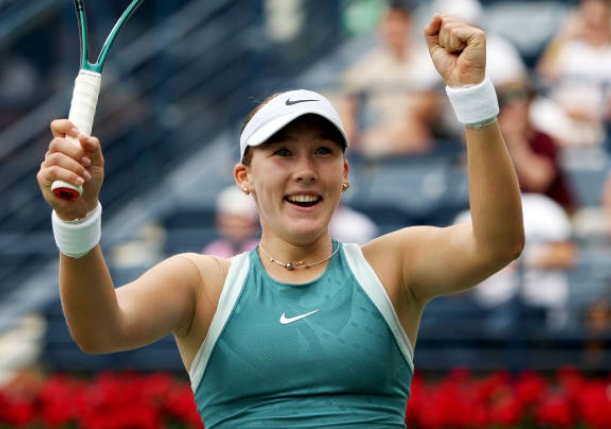The 18-year-old is a picture of poise these days.
By Chris Oddo | @TheFanChild | Monday June 1, 2025
Paris – Mirra Andreeva — how can she be only 18?
Look at the court craft, the nuance, and the been-there-done-that calm of the Russian. Look at the snappy power, the graceful slides, the ability to stand tall on the big stage.
Watching her fourth-round match on court Suzanne-Lenglen against Daria Kasatkina, I asked myself that question.
Facing a player who had won the pair’s only meeting, and one who had been to the quarterfinals in Paris on two previous occasions, Andreeva took the court with a sense of purpose, and an underlying calm.
Last year in Paris when she broke out and reached the semifinal, she was ranked number 38 in the world. This year she’s at number six, and there’s a good reason for that. Anyone who watched her win titles in Dubai and Indian Wells this spring knows that she has made an enormous step up in her game.
What was impressive more than anything else in the first set of her showdown with Daria Kasatkina on Monday was the Russian’s poise.
She actually prayed a pretty subpar opening set by her own lofty standards, but she was so calm and so present that she was still able to finagle her way out of a set against one of the craftiest clay-courters in women’s tennis. Andreeva was in danger of going down a break while serving at 3-3 and playing pretty poorly in that moment, yet she summoned the strength and the courage to save a pair of break points.
2 – Mirra Andreeva is the youngest player to reach back-to-back Women’s Singles quarter-finals at Roland Garros since Martina Hingis (1997-1998). Queen.#RolandGarros | @rolandgarros @WTA @WTA_insider pic.twitter.com/duVhydxNbs
— OptaAce (@OptaAce) June 2, 2025
From there, she took the last three games of the opening set. Andreeva’s vastly improved mental abilities combined with all the tools that she possesses makes for an incredibly promising player.
This match was actually dominated by Kasatkina in many ways. There was a bright spot from Andreeva early in the second set and she took a 2-0 lead.
After that Kasatkina took charge and won five out of six games and even had a set point. This is where things really got interesting from the standpoint of one who was analyzing Andreeva’s performance.
It would’ve been very easy for her to get upset. Many players have lost the plot in similar situations.
But Andreeva just kept plugging. She wasn’t executing the way she would’ve liked, so she was forced to rely on defense positivity, and opportunism.
She did this just that. Saving the set point and forcing Kasatkina to hit one more ball, time and time again. Eventually, it frustrated the Russian, and Andreeva found what she was missing for most of the match down the stretch, as she reeled off 11 of the final 13 points to notch a massive win.
She becomes the youngest player to reach back-to-back quarterfinals in Paris since Hingis in 1998.
The reason she did it is her mental game.

